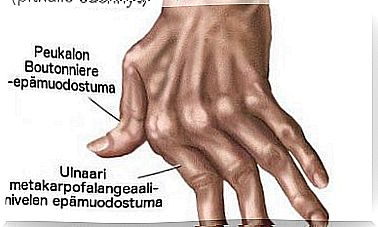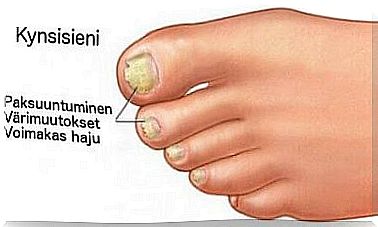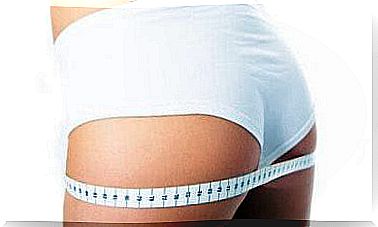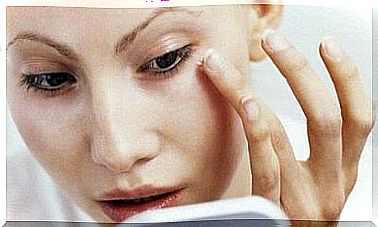Ear Wax Obstruction And Its Symptoms

Ear wax is one of the many defense mechanisms of the human body against foreign substances. Wax does play an important role in protecting and moisturizing the ears, but sometimes it accumulates too much. The occlusion caused by ear wax is a fairly common condition, but it is annoying and so it needs to be treated.
Wax is a yellowish-orange substance that is produced by secretions from the sebaceous glands and sweat glands. Its function is to help with ear lubrication, cleaning and defense. It is part of the elimination process that replaces superficial skin cells. Jaw and head movements are also involved in this process.
In some people, the secretion of earwax is strong and causes a blockage deep in the ear. The most common symptom is impaired hearing on the affected side. However, early diagnosis and prompt treatment can alleviate the situation.
Symptoms of ear wax blockage
This is quite an annoying affliction and can have a profound effect on a person’s quality of life. Estimates show that this condition, along with otitis media, are the main leading causes of hearing loss in young patients.
People suffer from difficulty hearing distant sounds and this eventually leads to a complete loss of hearing in the blocked ear. Patients with earwax obstruction often experience the following symptoms:
- Pain in the ear
- Feeling of pressure or swelling in the area
- Ringing or tinnitus
- Itchy ear
- Nausea and dizziness
- Fluid comes from the ear canal
- Detection of an unpleasant odor in the ear
When to see a doctor?
Seek medical attention whenever you experience any unpleasant or strange ear symptoms that affect your daily life. Doctors are usually qualified to assess the health of the ear by examining and comprehensively examining the ear canal.
It is important that you do not delay seeing a doctor and that you contact an expert as soon as possible. This is because if prolonged, it can lower the prognosis for improvement. Also, do not try to remove earwax alone or with traditional methods. Mainly because these situations increase the risk of complications.
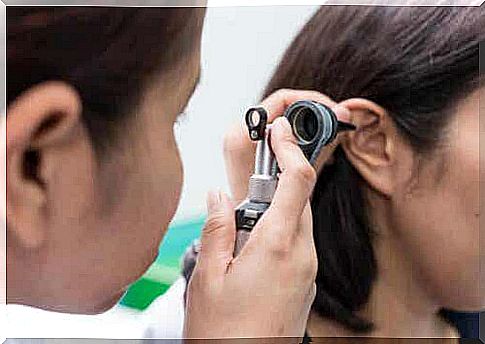
Ear wax obstruction: causes
The presence of wax in the ear is normal and part of the physiology of the human body. It disappears by itself as the epithelium of the jaw and skin surface changes during chewing, speaking, and also when the head is moved.
In this respect, the occlusion caused by earwax is due to factors that increase wax production or prevent its outflow. In addition, the main mechanism involved is shock when cotton swabs or hairpins are used as part of daily hygiene.
This is because the swabs move the wax to the back of the ear canal and can even cause damage to its structure. In addition, blockage caused by earwax can also be caused by the use of hearing aids and earplugs.
In addition, studies reveal that as a person ages, the serous and sweat glands atrophy and produce drier earwax that tends to accumulate. Similarly, some patients with developmental disabilities have hypoplastic or smaller ear canals that prevent the natural outflow of ear wax.
Diagnosis and treatment
A general practitioner or otolaryngologist can easily diagnose a blockage caused by earwax with an otoscope. This handheld device uses a beam of light and a magnifying lens to visualize the inside of the ear canal.
Examination of the ear through this device is known as otoscopy. The doctor inserts a small cone into the opening in the ear, which makes it easier to diagnose the lesions. Once a blockage is identified, the specialist can use the following medical procedures to clear it:
- The use of serum lytic agents involves the application of certain solutions inside the ear canal to moisturize and soften the accumulated wax. They let it do its job for 5-10 minutes, during which time the patient keeps his head tilted. Later, professionals will remove the diluted wax.
- Irrigation is the application of distilled water, hydrogen peroxide, or saline solution to the ear under moderate pressure with a syringe. It softens the earwax and removes it from the ear canal. It is often used by doctors in conjunction with cerumenolytics to facilitate the procedure.
- Manual removal requires a curette or small suction device that looks for a blockage and pulls it out.
Prevention and recommendations
Do not use cotton swabs inside the ear canal. Use them only for external cleaning of the ear surface. In the same way, reduce regular and prolonged use of headphones.
Professionals recommend the preventive use of natural oils or 70% alcohol if you have a tendency to clog. Use should be under strict medical supervision. In addition, patients who experience recurrent blockages should see a doctor every six months to assess the health of both ears.
We must also point out that special cleaning usually prevents the occurrence of new blockages, so a specialist can prescribe preventative treatment. In addition, there are ways to remove an ear blockage safely and without damaging the ear.
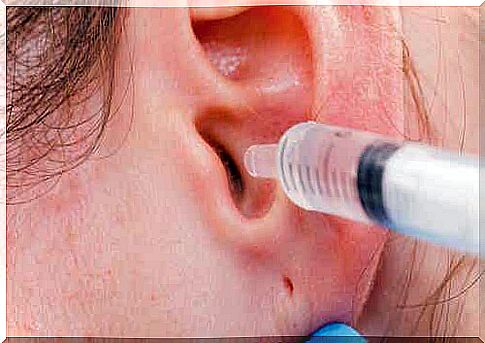
Avoid using traditional dewaxing methods
There is currently a long list of non-medical options for removing earwax. Most are based on the use of heat through candles or other hollow instruments to which the wax adheres.
However, these methods are risky and the risks involve e.g. burns. So contact your doctor if you suspect that you have a blockage caused by earwax. The professional is able to quickly identify and correct the situation and provide the necessary treatment.


